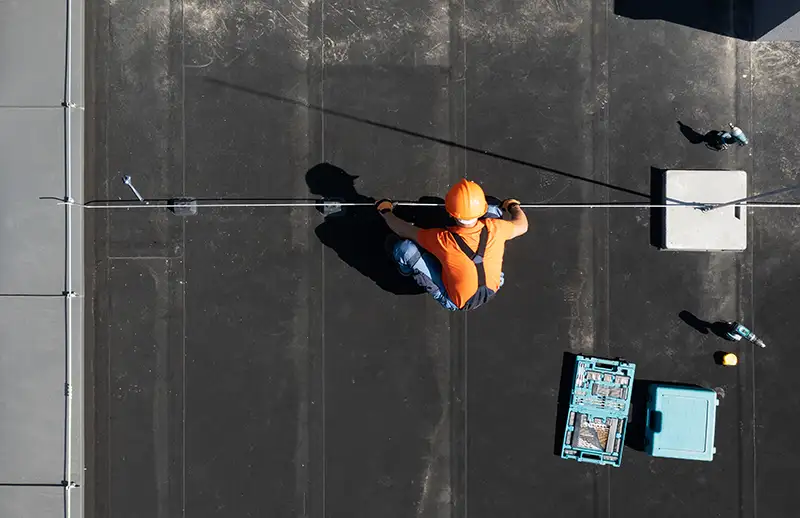Comprehensive Overview of Commercial Roofing Systems in HoustonIntroduction
Welcome to our comprehensive guide on commercial roofing systems.
A well-constructed roof not only safeguards the interior of a building from harsh weather but also plays a crucial role in determining the energy efficiency, comfort, and safety of a building.
Moreover, it can significantly enhance the aesthetic appeal of the building, giving it a polished and professional look.
In this guide, we delve deep into the world of commercial roofing, offering you a detailed insight into different used roofing systems, materials, installation processes, and maintenance tips.
Whether you are a business owner looking to install a new roof or someone interested in learning about roofing solutions, this guide is crafted just for you.
As we navigate through this guide, we will equip you with the knowledge to make informed decisions regarding your commercial roofing needs.
From understanding the different types of metal roofs, to learning about the latest innovations in roofing technology, we have got it all covered.
So, let’s embark on this educational journey, where we unravel the intricacies of commercial and residential roofing together, one layer at a time.
RJT Construction is your reliable roofing company serving the Houston, TX community.
We can assist you with roof repair, roof installation, storm damage, leak detection, repair replacement, tpo membranes, simply ply systems, and more.
Call Us Today (832) 979-4175

Understanding Commercial Roofing Services
Definition and Importance
Before we dive into the details of roof repairs, let’s take a moment to understand what commercial roofing truly entails.
Commercial roofing refers to the process of installing and maintaining the roof of a business or commercial building by contractors that offer commercial roofing services.
The roof is a critical component because it protects the building and its occupants from external elements such as rain, wind, and heat.
But the role of a commercial roof goes beyond just protection.
A well-designed roof can enhance the appearance of a building, making it stand tall and impressive.
Moreover, it plays a vital role in ensuring the building is energy-efficient, helping property owners and managers to keep heating and cooling costs low.
Types of Commercial Roofs
When it comes to commercial roofs, one size does not fit all.
There are various types of roofs to choose from, each with its own set of benefits.
Let’s take a look at the common types:
- Flat Roofs: These roofs are almost level, making them cost-effective and easy to maintain.
- Low Sloped Roofs: These roofs have a slight angle, allowing for better water drainage compared to flat roofs.
- Pitched Roofs: These roofs have a steep slope and are often seen in traditional business establishments, offering a classic look.
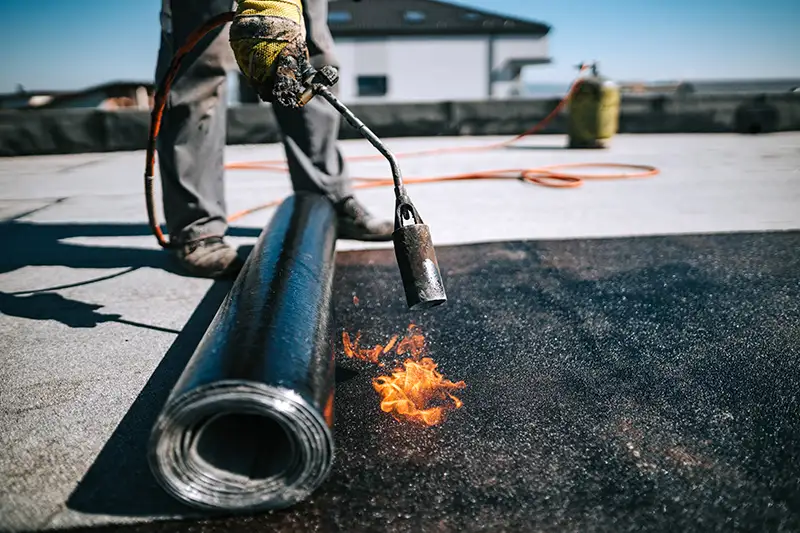
Materials Used in Commercial Roofing
Choosing the right material is a pivotal step in the roofing process. Different materials offer different benefits and understanding them can help you make an informed decision.
Here are some popular choices:
- Metal Roofing: Durable and recyclable, metal roofing is a green choice that lasts for many years.
- TPO Roofing: This is a type of single-ply roofing that is known for its durability and energy efficiency.
- EPDM Roofing: A popular choice for flat roofs, EPDM is a rubber material that is both durable and affordable.
- Asphalt Roofing: Known for its reliability, asphalt roofing is a common choice for commercial buildings.
- Green Roofing: This innovative solution involves covering the roof with plants, providing insulation and absorbing rainwater.
- Solar Roofing: Incorporating solar panels into the roof design, this option allows you to generate electricity while protecting your building.
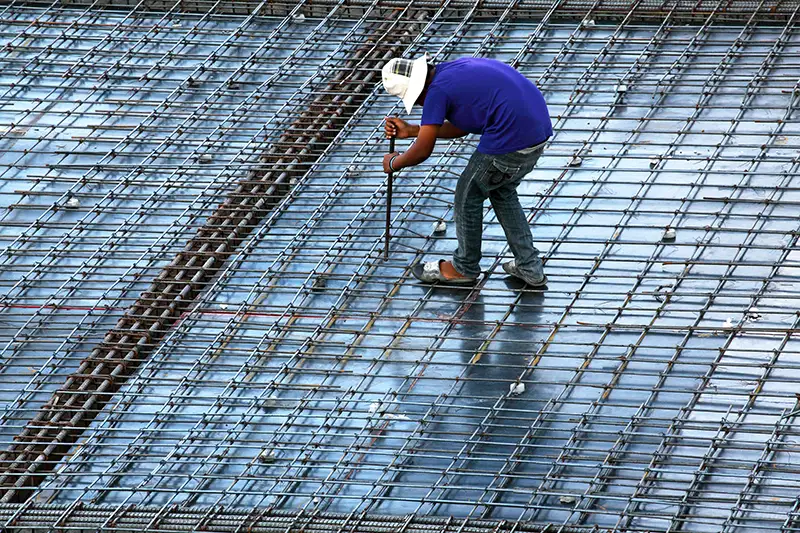
Installation of Commercial Roofs
Pre-installation Considerations
Before we embark on the installation journey, it is essential to consider a few critical factors that will influence the outcome of your roofing repair project. Here we discuss three primary considerations:
- Budget: Determining your budget is the first step. It helps in selecting materials and deciding on the design that aligns with your financial plan.
- Climate: The climate of your location plays a crucial role in the choice of roofing material and design. For instance, in a rainy area, a roof with good drainage will be a priority.
- Building Structure: Understanding the structure of your building is vital. The roof should complement the architectural design and be able to bear the weight of the chosen materials.
Installation Process
Installing a commercial roof is a meticulous process that involves several steps.
Let’s walk through the general process:
- Site Preparation: This involves cleaning the site and removing any old roofing materials to create a clean slate for the new roof.
- Installing Insulation: Insulation is placed to ensure energy efficiency and comfort inside the building.
- Laying the Roofing Material: This is the core step where the chosen roofing material is laid carefully to form the roof.
- Sealing the Joints: After laying the materials, the joints are sealed to prevent any leaks and enhance durability.
- Final Inspection: A final roof inspection is conducted to ensure that the installation meets the required standards.
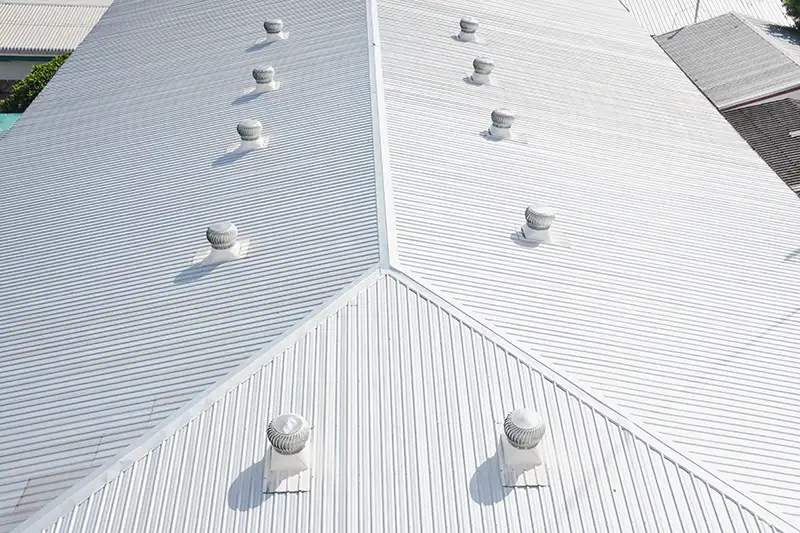
Hiring the Right Roofing Contractors
A successful roofing job project is largely dependent on the expertise of the commercial roofing contractors in Houston, TX.
Here we offer guidance on how to choose the right contractor:
- Research: Start with a thorough research to find reputable contractors in your area.
- Experience: Consider the experience of the contractor in handling commercial roofing projects.
- References: Ask for references and reviews from previous clients to gauge the contractor’s reliability.
- Certification: Ensure that the contractor is certified and adheres to safety and quality standards.
Maintenance and Repair
A well-installed existing roof can last many years, but it requires regular maintenance and timely repairs to stay in good condition.
In this section, we will explore the various aspects of building operators maintaining and repairing a commercial roof.
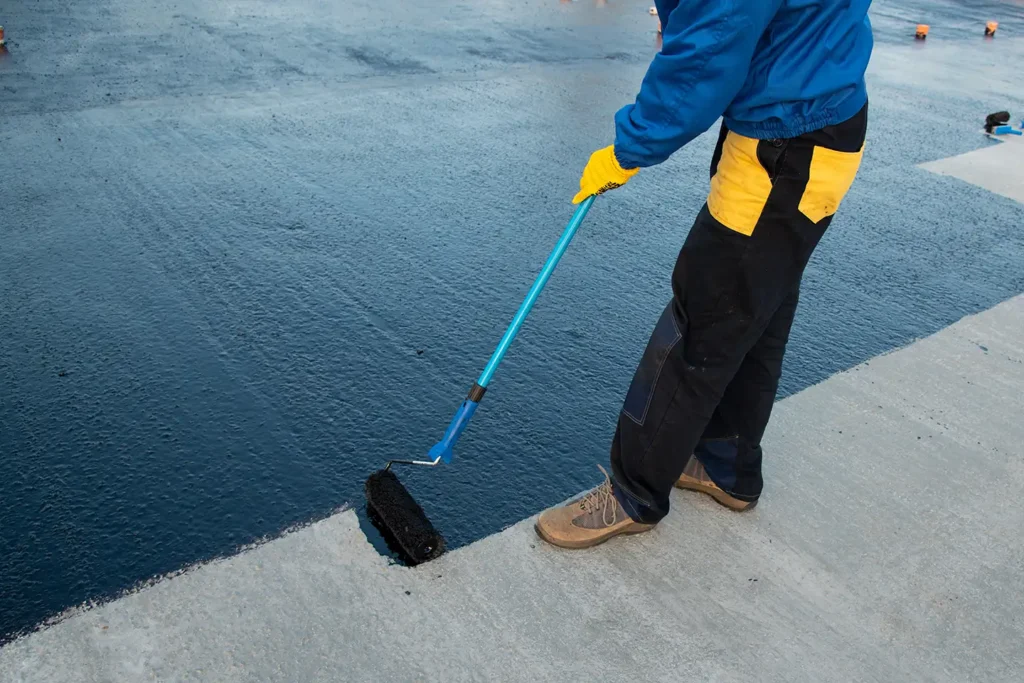
Regular Maintenance
Regular maintenance is the key to a long-lasting, roof repair too. Here are the steps involved in routine maintenance:
- Inspection: Regular inspections help in identifying potential issues before they escalate. It is advisable to have your roof inspected at least twice a year.
- Cleaning:Keeping the roof clean prevents the buildup of debris and reduces the risk of damages.
- Minor Repairs:Addressing minor issues promptly can prevent major problems in the future.
Dealing with Damages
Despite regular and maintenance programs, roofs can incur damages due to various reasons. Here is how to deal with them:
- Identifying Damages: Learn to identify signs of damage, such as leaks, cracks, or bubbles on the roof surface.
- Repair vs. Roof Replacement: Sometimes, repairing a damaged area is sufficient, but in severe cases, a section of the roof might need replacement.
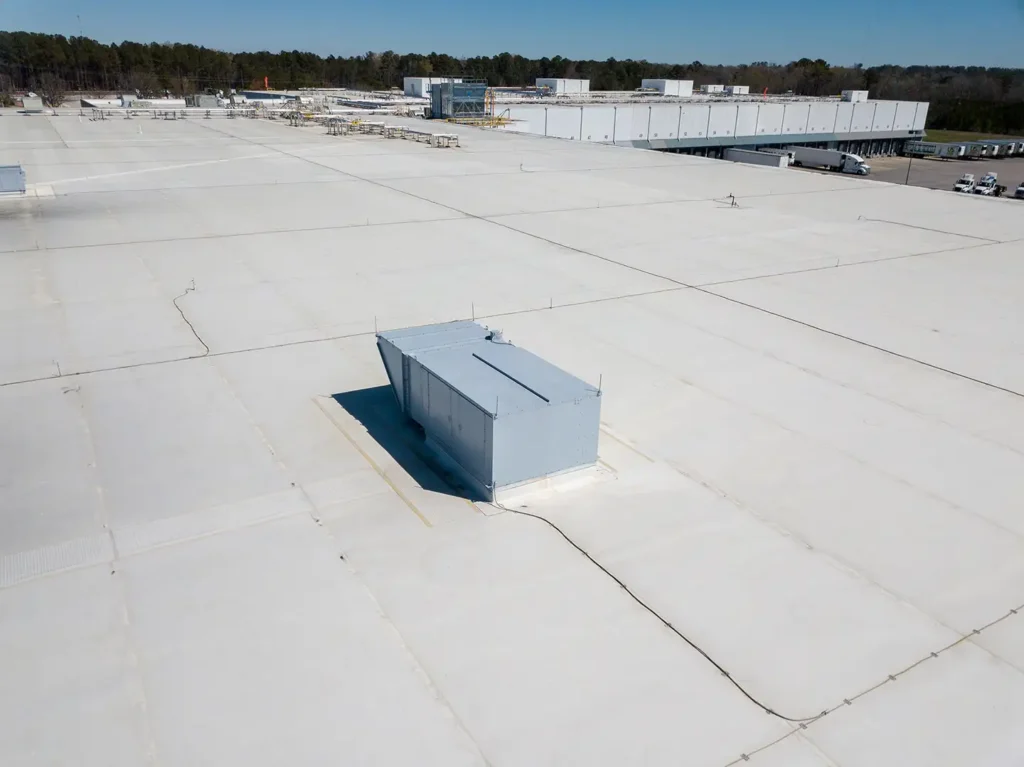
Preventive Measures
Taking preventive measures can go a long way in extending the lifespan of your roof. Here are some strategies:
- Weatherproofing: Applying a weatherproof coating can protect the roof from extreme weather conditions.
- Insulation: Proper insulation ensures energy efficiency and reduces heating and cooling costs.
- Drainage Solutions: Implementing effective drainage solutions prevents water accumulation and protects the roof from water damage.
By following a robust roof maintenance and repair regimen, you can ensure that your commercial roof remains in excellent condition for years to come, safeguarding your building and promoting energy efficiency.
Innovations in Commercial Roofing Houston
As we step into a world of rapid technological advancements, the field of commercial roofing is not left behind. In this section, we explore the latest innovations that are setting new benchmarks in the industry.
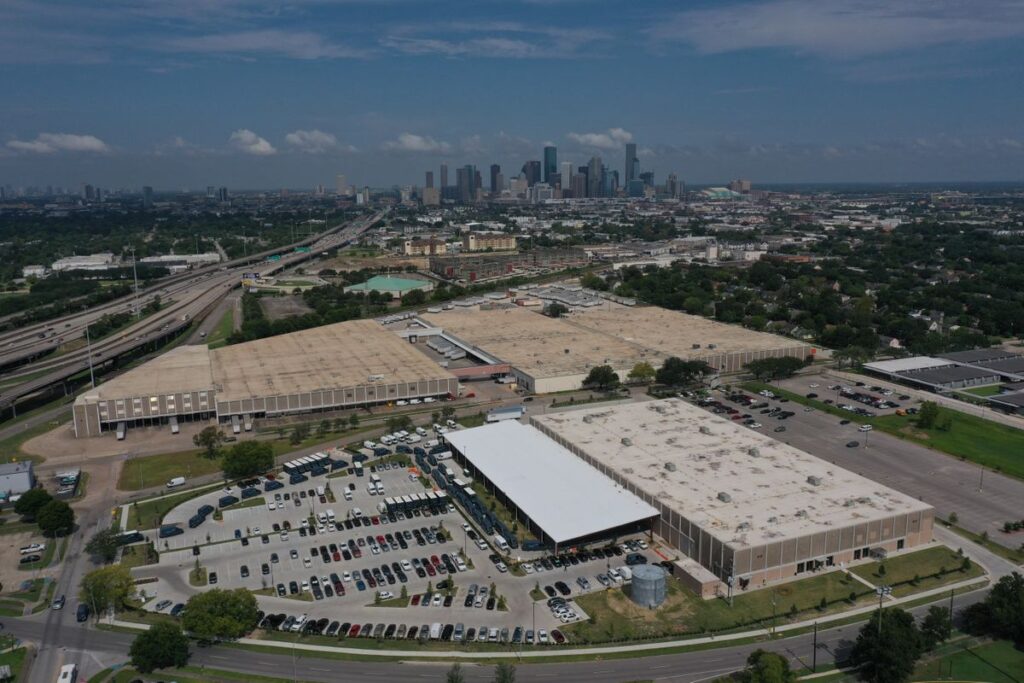
Technological Advancements
Technology has brought about a revolution in the commercial roofing sector. Let’s delve into some of the advancements:
- Roofing Software: Modern software allows for precise planning and execution of roofing projects, ensuring efficiency and accuracy.
- Drones for Roof Inspection: Drones have made roof inspections safer and more efficient, providing detailed aerial views of the roof’s condition.
Sustainable Roofing Solutions
Sustainability is the buzzword in today’s world, and roofing solutions are no exception. Here we look at some eco-friendly roofing products and options:
- Green Roofs: These roofs are covered with plants that provide natural insulation, reduce heat islands, and offer a habitat for wildlife.
- Cool Roofs: Designed to reflect more sunlight and absorb less heat, cool roofs help in reducing energy costs.
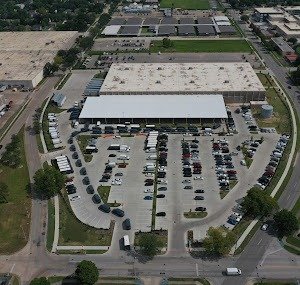
Future Trends
As we look towards the future, several promising trends are emerging in the commercial roofing landscape:
- Solar Roofs: Integrating solar panels into the roofing system not only protects the building but also generates clean energy, reducing reliance on fossil fuels.
- Smart Roofs: The concept of smart roofs involves integrating technology to monitor roof conditions continuously and alerting for necessary maintenance, ensuring a longer lifespan.
By embracing these innovations, business owners can see new construction projects not only enhance the longevity and efficiency of their roofs but also contribute positively to the environment.
Conclusion
As we reach the end of our comprehensive guide to commercial roofing, we hope that you have gained a deeper understanding of the various facets involved in selecting, installing, and maintaining a commercial roof.
From understanding the pivotal role that a well-constructed roof plays in safeguarding a building and enhancing its aesthetic appeal, to exploring the different types of roofs and the materials used in their construction, we have traversed a journey that equips you with the knowledge to make informed decisions.
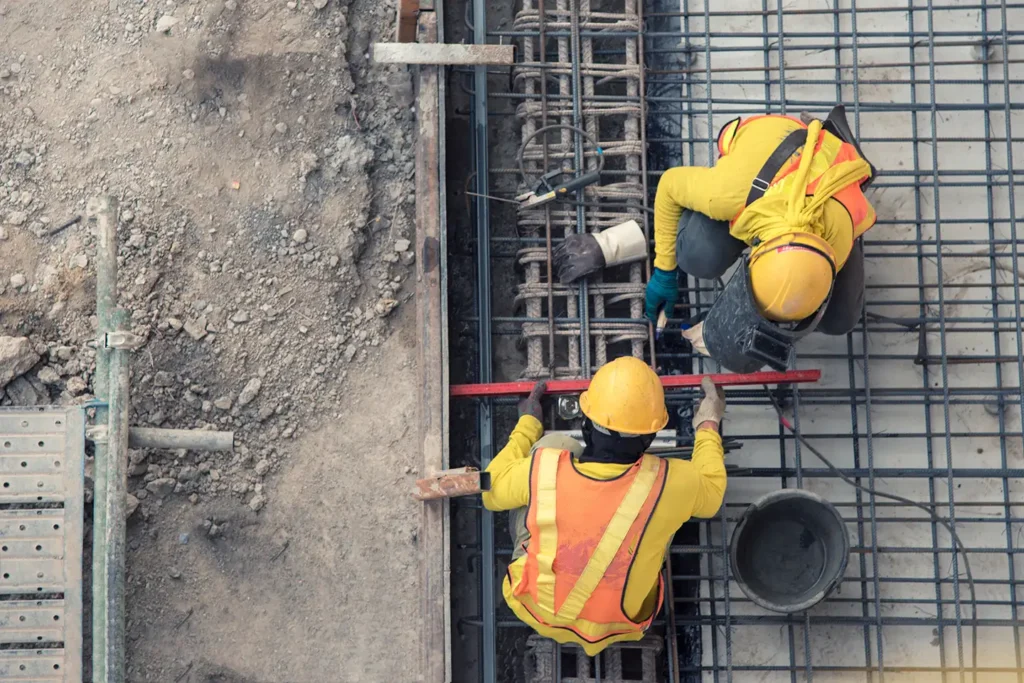
We also delved into the meticulous process of installing a commercial roof, emphasizing the importance of choosing the right contractor for a successful project.
Moreover, we highlighted the significance of regular maintenance and timely repairs in ensuring the longevity of your roof.
As we ventured further, we explored the exciting world of innovations in residential services commercial roofing, showcasing how technology and sustainability are reshaping the re-roofing industry, offering not only enhanced efficiency but also environmentally friendly solutions.
As you stand on the threshold of your new construction or commercial roofing project, armed with this knowledge, we trust that you will make choices that are not only beneficial for your business but also contribute positively to the broader community and the environment.

